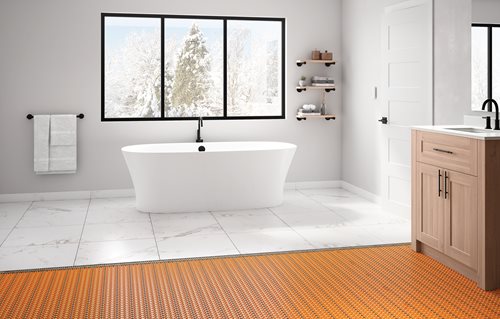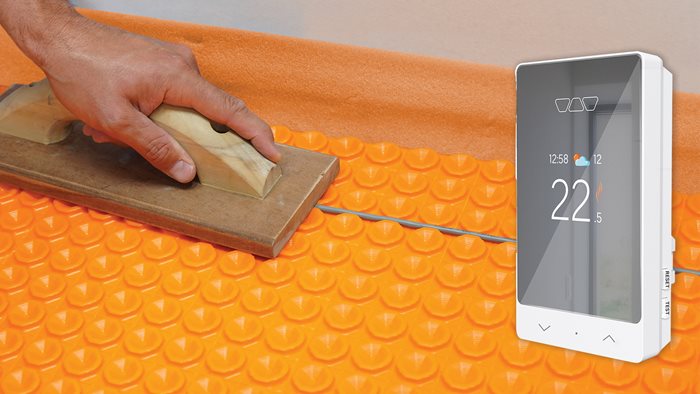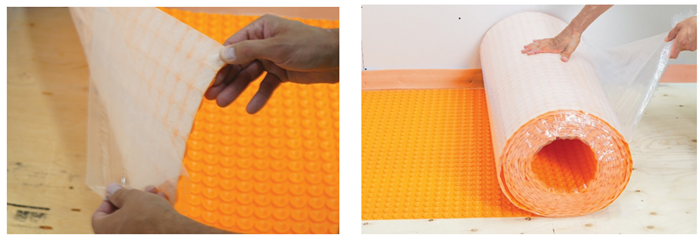Understanding Peel and Stick Uncoupling Membranes for Heated Floors

By Industry Partner Schluter Systems
Ask the Expert: Kali Pharand, Product Standards and Sustainability Coordinator
Peel and stick (PS) uncoupling membranes have hit the market and are gaining popularity. This is the new mess-free way to install an uncoupling membrane under tile, since there is no thin-set mortar required to install these membranes to plywood, OSB, gypsum, or concrete substrates – no mess, no stress.
Peel and stick membranes feature a pressure-sensitive adhesive (PSA) backing much like carpet tiles, which is a type of adhesive that allows the membranes to be repositioned during installation but gains strength each time pressure is applied during and after installation.
Main Functions
The core functions include uncoupling, waterproofing, vapor management, and support/load distribution. As with the thin-set versions, heating cables can also be inserted into the PS membranes to add floor warming properties. This can reduce costs during the cold, winter months. Like their traditional counterparts, peel and stick membranes are typically composed of polypropylene, which will waterproof the substrate from above. The free space underneath each of the PS membranes provides an access route for excess moisture and vapor to escape from the substrate, instead of penetrating the floor covering above.

Quiet Please!
Sound control is highly sought after in condos and other dwellings where there are multiple families. Schluter®-DITRA-HEAT-DUO-PS contains a thicker fleece layer to reduce sound transmission and increase the delta impact insulation class (IIC) rating, which is a number rating of how well the floor of a building reduces impact sounds, such as footsteps.
Easy Installation
Ease of installation is the selling point of these membranes. To install, peel off the release film from the fleece side of the membrane and adhere to the substrate. When it is positioned correctly, roll it into place. Until then it can be moved and replaced as necessary. The adhesion provided by the pressure-sensitive adhesives used for the PS membranes increases over time, and traffic on the surface of the tile installation further improves the bond.

One important note is that the substrate must be clean, even, and load bearing, according to the DITRA-HEAT Handbook. An appropriate primer can also be used with these membranes over any difficult-to-bond-to substrate or for increased adhesion, when required. A list of approved substrates can be found in the DITRA-HEAT Technical Data Sheet or Installation Handbook.

Wet Areas
Although not designed for exterior applications, PS membranes can bring the functionality of uncoupling, sound control, and heated floors to shower pans when used in conjunction with a primary waterproofing membrane like Schluter’s KERDI.
To find out if peel and stick membranes would benefit your installation, refer to Schluter’s DITRA-HEAT Technical Data Sheet or reach out to your local Schluter representative.
| 4/18/2024 10:29:30 AM |
0 comments